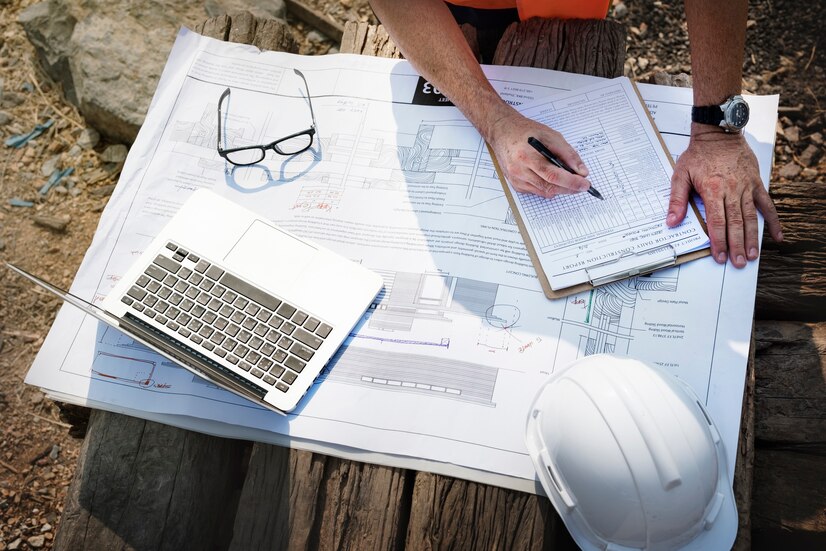The construction sector is being transformed—away from intuitive design toward science-based, adaptive construction. At the forefront of this transformation is a new generation of climate-resistant materials, sensor-integrated tiles, and algorithmic systems that underpin data-driven construction. These are not buzzwords—they represent systemic rethinking of building design, construction, and operation. In this blog, we learn about how modular innovations such as S-tile illustrate this new philosophy by combining innovative material science with analytically actionable insights to design spaces that adapt to their contexts.
Climate-Adaptive Materials for Extreme Environments
As weather patterns become increasingly erratic, traditional construction approaches are proving insufficient. That’s where climate-adaptive materials come in—designed to respond to temperature, humidity, wind, and solar exposure. These materials, including thermochromic films, hygroscopic composites, and bio-based polymers, adjust their behavior in real-time based on environmental input (Nature Sustainability, 2023). Such systems go beyond static durability and begin to mimic biological resilience.
Modern climate-adaptive materials are now being tested in facades, pavements, and cladding systems. Some change porosity to reduce solar gain, while others shift color to reflect heat. S-tile modules incorporate these technologies within their outer shells, using climate-adaptive materials to regulate surface temperature and moisture interaction. When layered with active sensing, these materials become part of a reactive system that defends against thermal stress, condensation, and UV damage. As the climate continues to destabilize, these innovations aren’t just optional—they are fundamental to future-proof design.
The Role of Sensor-Embedded Tiles in Real-Time Monitoring
Surfaces that sense—such is the promise of sensor-embedded tiles. Smart materials contain physical structure with inlaid electronics that monitor heat, pollution, humidity, and levels of stress. Sensor-embedded tiles, according to IEEE Sensors Journal (2024), provide real-time information of high spatial resolution, and new insights into how buildings react to changing conditions. Tiles form a distributed environmental intelligence network over a surface area of a building.
In devices like S-tile, there are sensors embedded directly in the tile substrate, which connect to cloud platforms. It delivers dynamic reporting of temperature spikes, pollutant levels, and more. Tile-based sensors can initiate maintenance notifications, adjust HVAC loads, and even show structural motion from settling or earthquakes. When combined with climate-adaptive materials, they close the feedback loop—monitoring conditions and creating material responses. This partnership is the way forward for responsive design, wherein the framework itself is an analytical device in real time.
The New Architectural Paradigm
Gone are the days when building decisions relied solely on architectural intuition. Today, data-driven construction is reshaping every phase—from site analysis and material selection to post-occupancy behavior modeling. In this new paradigm, sensors, analytics, and AI feed into decision-making loops that improve precision, sustainability, and cost-efficiency (Automation in Construction, 2024). At the heart of this approach are modular tools like sensor-embedded tiles, which provide the granular input necessary for real-time feedback systems.
Data-driven construction is now leveraging digital twins, where real-world sensor data is used to simulate building performance under varying scenarios. This means decisions around insulation, orientation, or ventilation are no longer guesses—they’re data-backed predictions. S-tile, for instance, contributes continuous environmental data, allowing engineers to adjust building responses in real time. When paired with climate-adaptive materials, these insights turn static materials into living systems. As regulations demand more transparency and buildings become more complex, data-driven construction offers the roadmap for intelligent, resilient design.
Cross-Disciplinary Science Behind Responsive Buildings
Responsive buildings are no longer speculative design ground—they’re a multi-disciplinary reality. Chemists and engineers, architects and data scientists collaborate to develop buildings that perceive, think, and act. Climate-adaptive materials give the physical structure its adaptability. Sensor-embedded tiles give the intellectual capacity. And data-driven construction provides the coordination. Together, they allow each building element to participate in system-wide intelligence (Advanced Intelligent Systems, 2024).
This synergy takes the form of systems like S-tile, where each component—material, sensor, processor—is functionally specific in a choreographed response system. If pollutants are increasing, ventilation increases. Solar gain peak and thermal coatings respond. And through data-driven construction, every action is warranted, documented, and optimized. This convergence of material science and digital analytics defines a new era of sustainable design—where buildings are collaborators in environmental stewardship, not just shelters.
From Reactive Tiles to Predictive Infrastructure
The most exciting development in responsive architecture is the transition from reaction to prediction. Using AI algorithms and big data, sensor-embedded tiles now forecast rather than just report. They anticipate weather changes, occupancy fluctuations, and structural strain. This leap turns materials into infrastructure—part of a predictive system that safeguards users and optimizes performance.
S-tile tiles exemplify this capability. With embedded edge processors and cloud sync, each module forecasts microclimatic conditions using machine learning models. Combined with climate-adaptive materials, these surfaces not only react—they prepare. In a data-driven construction framework, this anticipation allows smart grids to stabilize loads, HVAC systems to pre-condition air, and buildings to reduce peak demand. As energy markets fluctuate and environmental regulations tighten, predictive infrastructure powered by sensor-embedded tiles offers a vital competitive advantage. The future of architecture lies not in stone—but in sensors, systems, and the power to see ahead.
Conclusion
We are seeing a scientific renaissance in the built world. Climate-adaptive materials make buildings into robust ones. Sensor-imbedded tiles give the visibility to know and deal with environmental pressures. And data-driven building brings these pieces together into a holistic, intelligent whole. S-tile isn’t a tile—it’s a micro-system of prediction, response, and adaptability. In an era where cities face unpredictable climates and soaring energy costs, intelligent design is no longer optional—it’s existential. We’re not just building smarter—we’re building systems that evolve.


